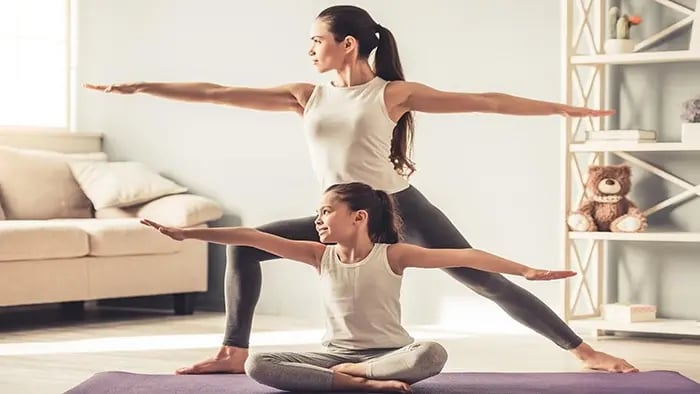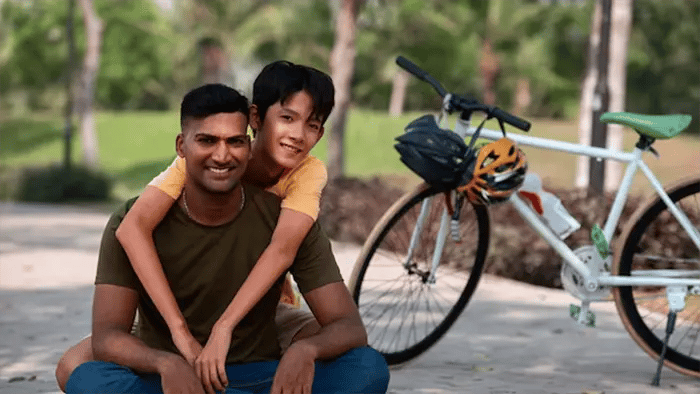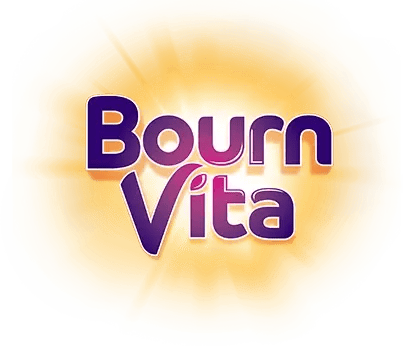- Encourages Mindfulness
- Improves Connection
- Builds Trust
- Is Quality Bonding Time
- Fulfills Family Fitness Goals
Introduction
Yoga is not just physical exercise for humans; it is also a mentally soothing opportunity for individuals to unwind and connect with one another. In the daily hustle and bustle of modern life, parents need to be more relaxed juggling multiple roles and responsibilities to pay full attention to their kids and each other. As for the children, they are cocooned in their student and digital lives, unwinding with their smartphones after a tough day at school instead of family members.
As a result, modern family members may often appear disconnected from one another, with differing opinions causing friction or conflict in a happy family. Therefore, both parents and children need to bond, spend time together, and relax, while growing closer. And this can be achieved through yoga, an ancient Indian form of performative exercise focusing on physical and mental wellness. But how do parents and children doing yoga together strengthen their bond? Here’s a handy guide to it.
What Is Yoga?

The word ‘yoga’ is essentially derived from the Sanskrit root ‘yuj’, meaning ‘to unite’ or connect. It is both an art and a science that leads to the perfect harmony between mind and body, human and nature, and among loved ones. While yoga helps enhance physical fitness, it also works on the mental liberation and spiritual well-being of an individual, opening their consciousness to the larger scheme of things. It uses various breathing exercises, asanas, and meditative exercises to provide physical and mental health benefits to the young and old alike. Yoga further helps create better connections and forge bonds within the family, while developing empathy and understanding in all.
The Role Of Parent-Child Yoga In Strengthening Bonds

Yoga dates back thousands of years, to the dawn of Indian civilization itself. Once the basic needs of humans were fulfilled, they began looking inward and improving themselves through science, art, culture, and physical activity. One of their brainchildren was yoga. Even in the 21st century, yoga is highly influential in improving bonds between parents and children. Yoga,
Encourages Mindfulness
Yoga teaches kids mindfulness, to be present in the moment, with an improved attention span and little care for distractions. It makes them experience every moment fully, by feeling every little thing about it. By making parents and kids focus on particular senses while practicing a specific asana and mindset, yoga cultivates awareness. Awareness is of thoughts, actions, emotions, and sensations, helping them manage stress, correct their mistakes, regulate emotions, and become more emotionally intelligent.
Improves Connection
Yoga improves the connection of kids and parents with their inner selves and fosters self-discovery and self-expression. However, this also teaches them the ability to listen, be present in the moment, and make mindful decisions. As a result, even if differing opinions arise between family members, yoga improves stress, anxiety, and anger management. The improvement can be seen to the extent of everyone sitting down for a calm and open-minded discussion, including strict elders.
Builds Trust
Yoga helps build trust between family members, parents, and kids alike. Many asanas require fitness and flexibility, something in which kids are often more proficient due to their youth and springiness. Not only are these asanas new for most parents, but they also give children a chance to see them put in the effort to learn something new together. This is a valuable lesson for kids as it makes them aware that their parents are not superheroes and should be empathized with. Trust and security are built in bonds when one is accepted and loved for their follies, and that goes both ways for kids and parents.
Is Quality Bonding Time
Yoga becomes quality bonding time for families as both parents and kids engage in a distraction-free activity together. Plus, mindfully spending those moments and developing trust while trying out new or difficult asanas together is as great as it gets for daily quality bonding time. Also, the moment people stop talking and start listening, most problems vanish, and bonding is improved. Parent-child yoga is the perfect solution for that.
Fulfills Family Fitness Goals
Yoga also helps parents and children attain their family fitness goals, with its meaningful and scientific asanas. The asanas not only enhance flexibility, help lose body weight, and improve mindfulness but also offer loads of health benefits. From reducing arthritis, back pain, lower back pain, and other health issues, to improving blood circulation, increasing the secretion of mood-boosting endorphins, and keeping every joint and muscle functional, yoga does it all.
Conclusion

Parent-child yoga is the modern-day solution to going back to one’s roots, strengthening family bonds, and improving family mental health through movement. Yoga is family-friendly, being a great physical workout and mental solace for children, teens, adults, and elderly alike. Therefore, it is important to understand the role of parent-child yoga in strengthening bonds through active movement before incorporating it into your family’s lifestyle.
Kaushiki Gangully is a content writing specialist with a passion for children's nutrition, education, and well-being. With more than five years of writing experience and a science-based background, she provides nuanced insights to help families raise happy, healthy kids. Kaushiki believes in making learning and healthy eating fun, empowering parents with practical, easy advice.
The views expressed are that of the expert alone.
The information provided in this content is for informational purposes only and should not be considered a substitute for professional medical advice, diagnosis, or treatment. Always seek the advice of your physician or another qualified healthcare provider before making any significant changes to your diet, exercise, or medication routines.
















